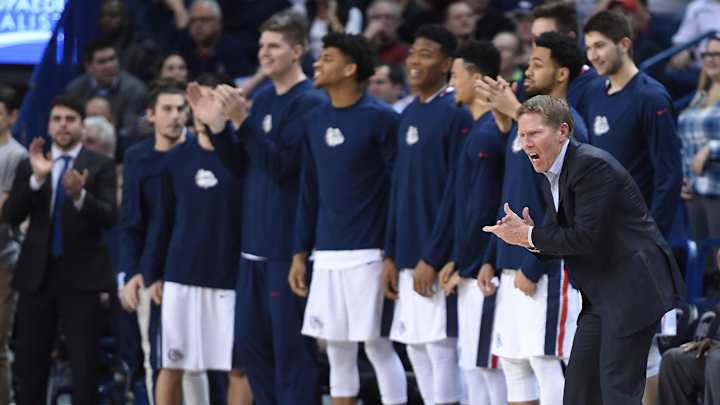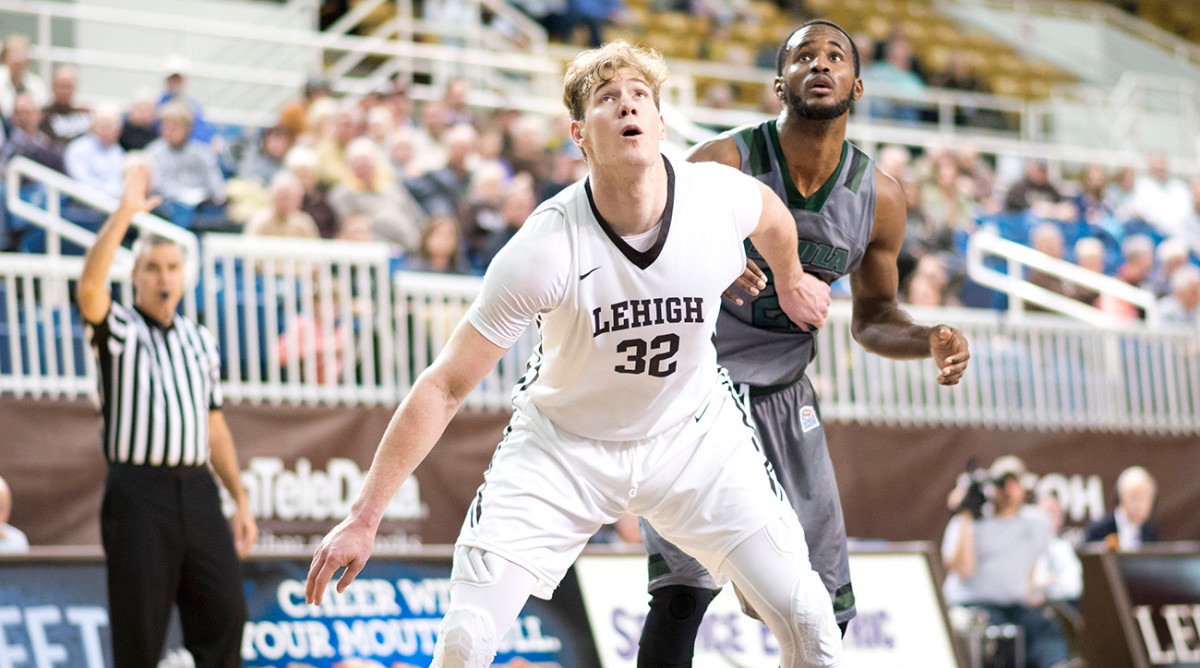Will Gonzaga go undefeated in the regular season?

It’s hard to quantify just how phenomenal a job Mark Few has done at Gonzaga, but the best way is probably to point to the Zags’ consistency: Few is in his 18th season coaching the Bulldogs, and they’ve made the NCAA tournament in each of his 17 years so far (and have 18 straight appearances overall). In 11 of those years under Few, they boasted a No. 8 seed or better. Few’s Gonzaga teams have won at least one game in the Big Dance 15 times, and he hasn’t suffered an opening-round loss since 2008.
Even last year, when Gonzaga’s NCAA streak was in real jeopardy after it dropped both of its regular-season games against Saint Mary’s, the Zags took down the Gaels when it mattered most, in the West Coast Conference tournament championship. Then, as a No. 11 seed, they easily handled Big East tournament champion Seton Hall and routed No. 3 seed Utah before narrowly falling to Syracuse in the Sweet 16.
The month of March isn’t complete without Gonzaga. But even with all of its success, the program has never completed an undefeated regular season or been to the Final Four. Could both of those things change this year?
Fun & Gun: A week behind the scenes with UCLA, the best show in college basketball
Here’s where the Bulldogs stand right now: After an impressive 79–56 home thumping of Saint Mary’s—a top 20 team on kenpom.com and the Bulldogs’ biggest threat in the WCC—on Saturday, the Zags have put themselves in position where running the table throughout the regular season is a real possibility.
True, they still have the return trip to McKeon Pavilion, plus a home-and-away with BYU (No. 71 on kenpom.com, No. 93 in RPI), but it’s hard to look at that home win over the Gaels, where the Bulldogs scored 1.34 points per possession and held the Gaels’ excellent offense to 0.95, and not believe right now that they can and will win out. And if Gonzaga does win out and takes the WCC tournament crown as well, it would be hard to deny it a No. 1 seed in the NCAA tournament.
That’s a discussion for if and when the time comes, and while the WCC of course isn’t the ACC or the Big 12 or the Big East, the Zags played a decent nonconference schedule and currently own four top 25 kenpom.com wins, including over Arizona (No. 17), Iowa State (No. 23) and Florida (No. 13). Even if the Bulldogs slip up once or twice down the stretch, they should still sail into a high seed.
That brings us to the next question: Can this Gonzaga team break through and become the program’s first to reach the Final Four? It looked capable back in 2013, when it earned its first and only No. 1 seed after a 31–2 regular season, but got tripped up by Wichita State in the second round (the Shockers then went on to the Final Four). You may be wondering what’s different this time around. Like the current team, that ’13 Zags squad didn’t have many holes, but there are a few key differences.
Year | Offensive Efficiency | Defensive Efficiency | eFG% (offense) | eFG% (defense) | 3PT shooting (offense) | 3PT shooting (defense) |
|---|---|---|---|---|---|---|
2016-17* | 120.3 (5th) | 90.1 (4th) | 57.9 (4th) | 42.4 (4th) | 40.3 (11th) | 29.0 (8th) |
2012-13 | 118.6 (3rd) | 90.9 (30th) | 54.9 (8th) | 44.9 (34th) | 36.5 (59th) | 32.9 (115th) |
*Stats through Jan. 19
**All stats from kenpom.com
As you can see, this Gonzaga team is clearly better defensively. It’s more efficient, and opposing teams are shooting at a worse percentage than they did against that 2012–13 team. These Zags are also shooting nearly four percent better from the perimeter. On the flip side, the current Zags have been just average at rebounding, and the team’s one serious flaw—offensive free-throw rate—is much worse than it was four years ago.
The defensive stats are notable, however, because that’s where this Gonzaga team really differentiates itself from its predecessors. The highest a Mark Few team has finished in adjusted defensive efficiency in the kenpom.com era was 18th. If the Bulldogs can stay in the top 10 that may be the reason to believe this is the year they can get into the Final Four. (For reference, the only other team currently in the top 10 in both offensive and defensive efficiency is North Carolina, and last year only three teams finished there, including Villanova and No. 1 overall seed Kansas.)
Helping anchor that defense is junior guard Nigel Williams-Goss, who sat out last season after transferring from Washington and is swiping 1.7 steals per game. Williams-Goss also leads the Bulldogs in scoring (15.2 ppg) and assists (4.9 apg), helping to fill the offensive void that was left by the departure of Kyle Wiltjer and Domantas Sabonis.
The Bulldogs don’t have a rebounder quite like Sabonis was, but Przemek Karnowski has returned from back surgery to do a little of everything. The 7' 1" big man is contributing 12.6 points, 5.9 rebounds and 2.1 assists per game while shooting 58.3% from the floor. Add Cal transfer guard Jordan Mathews and freshman forward Zach Collins as Bulldogs averaging double-figure scoring, plus the sharp-shooting ability of Josh Perkins and Johnathan Williams and you can see what makes the offense—and Gonzaga as a team—so dangerous.

Game of the Week: UNC Wilmington at College of Charleston, Thursday at 7 p.m. ET
The Seahawks, featured in an earlier mid-major report, have been rolling so far in the CAA. They’re 6–0 in conference play and have won those games by an average of 14.2 points. But on Thursday, UNC Wilmington will hit the road to face the Cougars, who are also off to a 6–0 start in the CAA and have a chance to announce themselves as a conference title contender.
It’ll be a clash of styles at TD Arena, as the veteran Seahawks bring the top offensive efficiency in conference play to face the more youthful Cougars, who boast the CAA’s second-best defensive efficiency. College of Charleston plays at one of the nation’s slowest tempos and gives up the fewest steals per possession in the country, while UNC Wilmington relies on creating turnovers with its pressure defense. Something will have to give in this one.
Player to Watch: Tim Kempton, senior center, Lehigh
Kempton has already been named Patriot League Player of the Year twice; as a sophomore in 2014–15 and again as a junior in 2015–16. Yet his senior season is shaping up to be his best yet. The 6' 10", 245-pound center’s numbers are up nearly across the board—he’s averaging career highs in points (21.4, which ranks 19th in the nation), rebounds (10.6, 14th in the nation), field-goal percentage (56.6%), free-throw percentage (77.2%) and blocks (1.1). Kempton has even expanded his game to the three-point line a bit this year, hitting 12 of 29 attempts (41.4%) to keep defenses honest. (He had attempted just 17 free throws during his first three years, combined.) He’s a ferocious rebounder, especially on the defensive boards. In Lehigh’s win Saturday over Holy Cross, he grabbed 13 defensive rebounds alone (17 in total) to go along with his 23 points.
Inside the rapid rise of Bluejays big man Justin Patton
The Mountain Hawks haven’t been to the NCAA tournament since their memorable first-round upset of Duke in 2012, but with Kempton leading the way, they’re off to a 4–2 start in Patriot League play this year. Boston University and Bucknell stand as their main challengers in the conference, but the Hawks will hope to send Kempton’s superb career off with a trip to the Big Dance.
Stat of the Week: 3.94
Nicholls State’s 7' 1" senior center Liam Thomas currently leads the country in blocks per game with an impressive average of 3.94, which has included seven games of at least five rejections. The last person to average that many over the course of a whole season was Arizona State’s Jordan Bachynski, who recorded 4.13 per game in 2013–14. We’ll see if Thomas, who is fourth in the country in block percentage, can keep pace.
